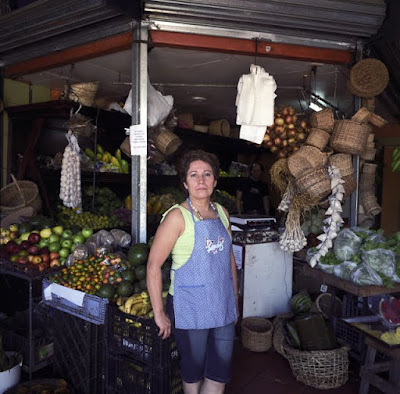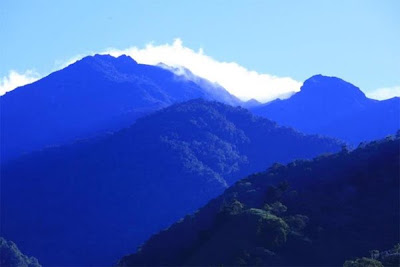
MACA, Monte Azul Contemporary Art, is pleased to announce the award of Artist in Residence at Monte Azul to Federico Herrero.
MACA invites curators Silvia Karman Cubiñá, Executive Director and head curator of the Bass Museum of Art in Miami, and Mark Coetzee, independent curator, artist and writer to host a private and casual discussion at our facilities in Costa Rica.
Limited to five couples or 10 people, MACA invites collectors to participate in a special event that includes a private visit with the artist at his studio, two nights at Monte Azul boutique hotel located in Costa Rica’s new Center for Contemporary Art and Design, a private cocktail reception with the curators and the artist, a dinner in honor of the artist and guest curators, with a private and casual “living room” presentation and talk about the artist’s work and currents in the contemporary art world. The trip includes options for horseback riding, spa treatments and museum and gallery visits.
FEDERICO HERRERO
Federico Herrero (b. 1978) is arguable Costa Rica’s most notable artist of our time. Invited twice to the Venice Biennale, (awarded Best Young Artist in 2001, invited to exhibit in 2009), Herrero’s work was displayed in the Latin American pavilion, which for the first time in the Biennale’s history was located in the central armory.

Herrero’s work is greatly inspired by the city of San José. Known for chaos and congestion, this improbable patchwork of urban is disarray is also dynamic and industrious, inhabited by a young population whose median age is only 27. Herrero’s understanding of his surroundings extends beyond the sensorial elegance found within the disorder of the city.
A keen understanding of how the perception of color is affected by light and energy allows apparently disparate fields of color to coexist on his canvasses. Voids of exposed gesso, with densely worked acrylic paint, oil paint, ball point doodles and random spray paint seem like a recipe for disaster, however, the apparent disarray and random placement is finely orchestrated and held together with the same youthful optimism of his home city. However, this is only one of the many layers of a work that goes beyond interpretation of a landscape and in fact, delivers a fantastical awareness or reality of its own.
Herrero places “eyes”, white circles with black centers, throughout his paintings. In effect, the paintings take on a existence on their own terms, returning the viewer’s gaze in a game of who’s watching whom as well as blurring the line that separate the material world from the realm of the imagination. Within the color field, shapes and voids, Herrero often introduces creatures that he calls Martians, adding yet another dimension.
Federico Herrero lives and works in San Jose, Costa Rica. He graduated from Pratt Institute in New York in 1998. In the past few years he has exhibited his work in prestigious international institutions such as the Watari Museum of Contemporary Art, Japan; Centro Cultural Conde Duque, Spain; First Prague Biennial, Czech Republic; Musee d’art moderne de la ville de Paris, France; and the Museum of Fine Arts, Taiwan, among many others, as well as various art fairs and biennials including Art Basel, Venice Biennale, Seville Biennial, Aichi World Expo in Nagoya, Japan.
MARK COETZEE
“Art has the capacity to help us understand our place in the world: our cultural past reflects how we have impacted the world that surrounds us, and the present challenges us to consider how we wish to impact the future through the traditions, cultural activities and customs we surround ourselves with now.
Art does not allow us to simply accept the status quo but demands that we be aware of our actions, aesthetic traditions and ethical practices. It also asks us to think carefully on such complex issues as what it means to be both human and responsibly human.”
Originally from Cape Town, South Africa, Mark Coetzee has established himself as a prominent force in the international art scene. A respected artist, prolific writer, recognized art historian, and curator, Coetzee's career has included distinguished positions as Director of the Rubell Family Collection (RFC) in Miami for eight years, the position of adjunct curator at the Palm Springs Art Museum in California and was also a lecturer in critical theory, art criticism and contemporary art practice at the New World School of the Arts (NSWA), as well as of co-director of the Honors Program.
In December 2008, Puma.Creative partnered with the Rubell Family Collection to support the exhibition “30 Americans.” He has been an adjunct curator and faculty member at a variety of institutions and most recently a prestigious invitation to represent the Zeitz Foundation (www.thelongrun.org) as the organization’s fine art Specialist.
SILVIA KARMAN CUBIÑÁ
“The role of the curator is to present, interpret, facilitate, mediate (but not too much), but most importantly, to make the experience of viewing an exhibition engaging, even fun. I think exhibitions should also provoke, delight, challenge, and sometimes infuriate, if necessary. The curator and the space are less important than the art. The curator's responsibility I think is to know when to stand back and let the art do its job.”
Ms. Cubiñá is the Founding Director of The Moore Space (since 2002), an internationally recognized contemporary art exhibition space in Miami, founded by collectors Rosa de la Cruz and Craig Robins. Prior to running The Moore Space, Ms. Cubiñá served as an independent Curator and held the position of Adjunct Curator at INOVA, the Institute of Visual Arts, University of Wisconsin, Milwaukee. Previously, she held positions at The Mexican Museum in San Francisco and the Cuban Museum of Art in Miami. At The Moore Space, Ms. Cubiñá organized exhibition projects with artists and organized numerous group exhibitions. In 2007, she presented the landmark exhibition French Kissing in the USA, a group of works by emerging French artists. She has lectured extensively internationally, and has participated in numerous grant panels and award selection committees. Most recently she served as a juror to the Guggenheim Museum's prestigious Hugo Boss Award 2006. In 2007, she was a finalist for the Walter Hopps Award for Curatorial Achievement, and was one of only ten fellows at the Center for Curatorial Leadership program in New York, a well-respected training program for museum curators.
PRELIMINARY EVENT OUTLINE
THURSDAY, 25 February 2010
Option to meet the artist at his studio in San José for those arriving the day before.
Transportation to hotel in San José and dinner.
FRIDAY, 26 February 2010
Arrive at Monte Azul. Welcome reception and orientation.
Free afternoon to relax.
Evening dinner at our restaurant either individually or at one seating for all.
We could possible split guests at tables with the curators and artists.
SATURDAY, 27 February 2010.
Monte Azul offers individual or group recreation with each guest selecting, for example, from the following:
Monotyping workshop
Screen-printing Workshop
Horseback riding
Guided hiking
Cheese-making workshop
Guided bird-watching, etc…
The afternoon is open with an option for Spa treatments.
Early evening we meet at Casa Palo Alto for cocktails, followed by Mark’s suggested casual presentation with the curators and the artist.
Dinner is served at Casa Palo Alto and followed by desert and live music (folk guitar) and after dinner drinks.
SUNDAY, 28 February 2010.
Farewell breakfast and return to San José or other destinations.
TRAVEL ARRANGEMENTS
Leigh Ann Coultier, selected by Condé Nast Traveler as the top Costa Rica luxury travel expert nine years (2000 - 2009) in a row will individually tailor the entire trip for each client, door-to-door, to include possible extension to beaches, etc., by client request.


























